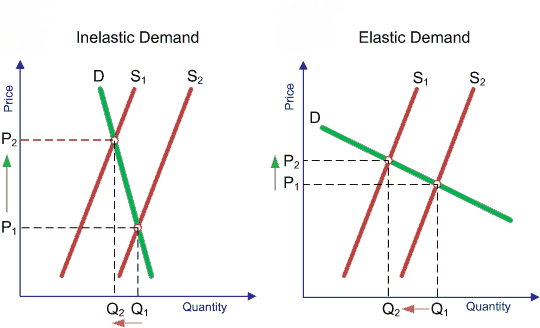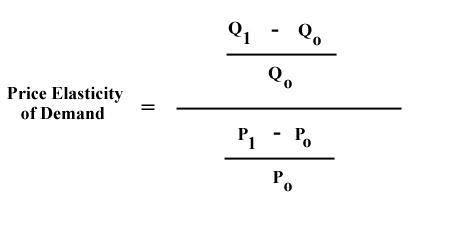Introduction
AT&T is a Fortune 500 enterprise specialized in mobile, television, and internet technologies. Its history dates back to the very year when the telephone was invented. Throughout the years, the company has expanded by acquiring such firms as Pacific Telesis Group, etc., and has successfully entered the international market. Nowadays, it is one of the global leaders in the media and telecommunications industry, and its annual profit equals $163.8 billion. Overall, AT&T’s focus on innovation, stakeholder interests, current trends, and the constant widening of its high-quality product line is that what increases its competitiveness in the market and attractiveness to millions of people worldwide (“Company overview,” 2017).
Company Analysis
Product Description and Usage
AT&T’s current product line is highly diverse. It sells a variety of IT devices including smartphones, tablets, and related accessories. However, the accent is made on mobile, TV, and internet packages for individual customers and businesses. For instance, internet products include a wide range of tariffs with different speeds and complimentary services able to meet the needs of people with varying capabilities of purchasing. AT&T also provides phone equipment and connection services including landline, digital, long-distance, and wireless telephony. Additionally, it offers many TV packages that can comprise premium, sports, and international channels. The distinctive feature of AT&T’s internet and television services is that they may be streamed on many devices at once and can be utilized by multiple users. Moreover, all these services can be purchased in bundles with prices varying from $40 to $99.9 (“Shop & support,” 2017).
Demand and Supply
Product demand largely depends on the purchasing capability of buyers, as well as their willingness to pay (Hirschey & Bentzen, 2016). Therefore, the demand in the telecommunications industry will be determined by-products’ utility, quality, value, and price. In this way, the volumes of AT&T’s outputs, i.e., TV and internet streaming, number of offered channels, etc., will primarily vary depending on the price for each package and device. Overall, the demand curve shows that customers will buy the content more frequently if its price remains reasonably low. By having the moderate-price options in its product line, AT&T will maintain the current quantity of the overall purchased products.
According to Veith (n.d.), service competition in the market has a direct effect on the product supply, i.e., the higher competition will increase the product and infrastructure supply. Moreover, the researcher states that the competition can have an indirect effect as well − it increases the demand for high-quality offers and consequently increases the supply (Veith, n.d.). Thus, competition is positively correlated with infrastructure expansion. It means the more competition will be in the market and the more customers will demand high-quality services, the more AT&T will invest in the production and supply new products.
Substitutes and Complements
It is possible to say that AT&T’s products are among the best in the market. However, some brands specialized in TV streaming, including Verizon and Xfinity, offer competitive substitutes. Some of them also provide cheaper bundle deals. Additionally, Skype and some other firms offer apps allowing cost-free streaming of information (Darwiche, Péladeau, Rupp, & Groene, 2017). The low price for the substitute may decrease the demand for AT&T’s products. At the same time, the complements for the enterprise’s goods include various IT devices such as iPhones and iPads, as well as TV sets, and so on. The availability of affordable technologies in the market is core to AT&T’s product demand. As soon as the price for these complements increases, there is a chance that people will purchase the company’s services less (Chand, n.d.).
Product Elasticity
In the long run, the demand for the majority of goods is much more elastic than in the short run. One of the reasons for this is that people need time to change their habitual consumer behavior (Gwartney, Stroup, Sobel, & Macpherson, 2016). However, it is possible to say that the demand for media and telecommunications products is more elastic in the short term. Since TV and internet packages provided by AT&T are valid during a certain period, the aggregate stock of each product which a consumer has is more closely related to the annual volume of production. As a result, a small change in the total stock that consumers want to have can lead to a big change in the rate of purchases (Gwartney et al., 2016). For example, if the price for a TV package increases by 10%, there will be about a 5% drop in the number of products that consumers want to have. Initially, it may cause a decline in purchases of AT&T’s packages by more than 5% but, in the end, when consumers’ annual deals will become invalid, they will have to replace them, and the demand will increase again. Thus, in the long run, the demand for AT&T’s products is less elastic than in the short run.


Production Intensity and Technology
The telecommunications industry is primarily capital-intensive as it requires investments in the development of IT systems and efficient delivery infrastructure. Therefore, technologies play a significant role in AT&T’s product production process. To maintain high volumes of output and increase customer satisfaction, the company should have an advanced technology needed to support its extensive network, minimize the risks of streaming delays, disruption, and connectivity loss. However, it is possible to say that AT&T uses the most recent advances available in the market and keeps up with the current trends, and there are still no substitutes for the technology it has now.
Market Structure
It is possible to say that AT&T operates in an oligopoly. There are only a few competitive enterprises specialized in TV and internet streaming in the domestic market. Additionally, Dastidar (2017) states that “the central feature of oligopoly is the interdependence of firms’ activities” (p. 2). This feature can be observed in AT&T’s cooperation with technology providers such as Apple, etc. However, since compared to monopoly, more than one company can dominate this market structure, to sustain, the firms can compete on prices.
Conclusion
AT&T will likely retain its leading position in the industry because it currently has all the required qualities for that and its strategic orientation supports further growth. The major risks, however, come from the presence of cheap and free product substitutes by such brands as Viber and Skype that already caused significant drop-offs in the telecoms’ profitability over the years (Darwiche et al., 2017). Still, TV and internet streaming supported by high-end technologies remain the major strength of the enterprise, and AT&T can further exploit it to improve the performance.
It is observed that when the traffic on existing lines increases, “customers’ demand for high-quality infrastructure” increases proportionally (Veith, n.d., p. 3). It means that if AT&T wants to attract a greater number of customers, it should utilize excellent technology to be able to provide high-quality service. Thus, it must continue to monitor the recent trends in the technology market and invest in innovation. As stated by Veith (n.d.), quality is one of the primary drivers of competition and customer demand. Thus, to remain competitive, the company should continue to enhance its value creation capacity. By focusing on quality and considering customer interests in product differentiation and pricing, AT&T may develop customer loyalty that will contribute to its stable financial performance and brand recognition.
References
Chand, S. (n.d.). Effect of demand curve on substitute goods and complementary goods | micro economics. Web.
Company overview. (2017). Web.
Darwiche, B., Péladeau, P., Rupp, C., & Groene, F. (2017). 2017 telecommunications trends. Web.
Dastidar, K. G. (2016). Oligopoly, auctions and market quality. Tokyo, Japan: Springer.
Gwartney, J. D., Stroup, R., Sobel, R. S., & Macpherson, D. A. (2016). Economics: private and public choice. Boston, MA: Cengage Learning.
Hirschey, M., & Bentzen, E. (2016). Managerial economics. Andover, UK: Cengage Learning.
Price elasticity of demand. (2013). Web.
Shop & support. (2017). Web.
Supply & demand. (n.d.). Web.
Veith, T. (n.d.). Supply and demand for telecommunication infrastructure. Web.